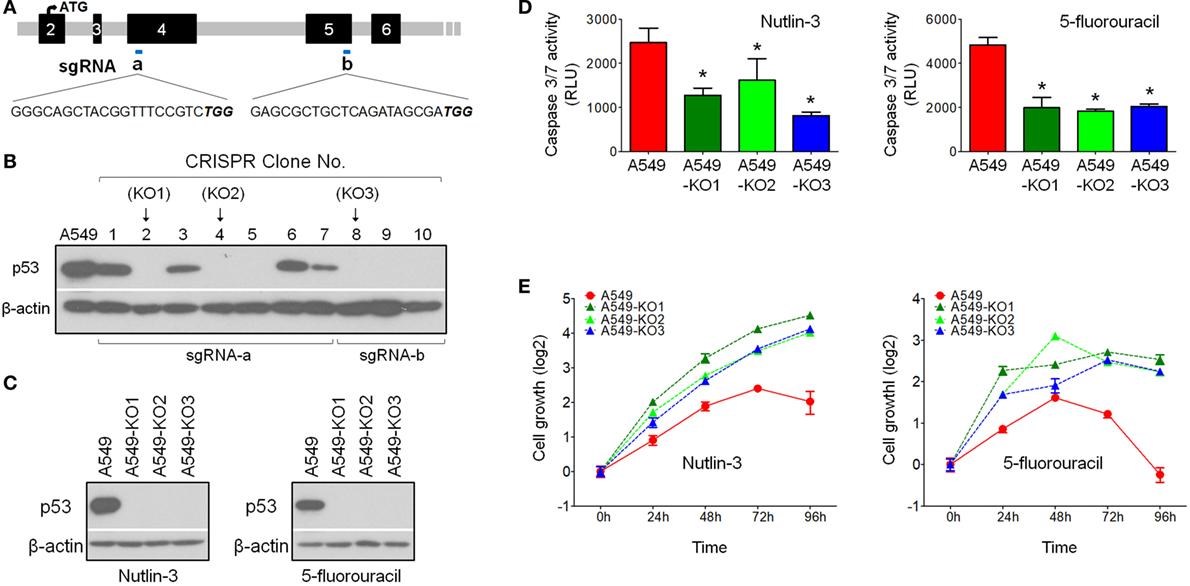Cas9 Stable Cell Line - A549
Cat.No. : CSC-RO0027 Host Cell: A549
Size: >1x10^6 cells/vial Validation: T7 Endonuclease I assay
Cat.No. : CSC-RO0027 Host Cell: A549
Size: >1x10^6 cells/vial Validation: T7 Endonuclease I assay
| Cat. No. | CSC-RO0027 |
| Product Type | Cas9 overexpression stable cell line |
| Introduction | Clustered regularly interspaced palindromic repeats (CRISPR)/Cas9 is a gene-editing technology that contains two essential components: a guide RNA (gRNA) to match a target gene, and the Cas9 (CRISPR-associated protein 9) endonuclease which causes a double-stranded DNA break, allowing modifications to the genome via nonhomologous end joining (NHEJ) or homology-directed repair (HDR). |
| Cell Line Information | A549-Cas9 cell line is engineered to stably overexpress Cas9 nuclease. The Cas9 nuclease in A549-Cas9 cell line has been functionally validated using T7 Endonuclease I assay. In combination with separately transfected sgRNAs, A549-Cas9 cell line can be used to efficiently generate targeted genomic modifications including gene knockout, gene knockin, gene mutagenesis, gene tagging etc. It is also an ideal cell line model for sgRNA screening and validation, either individually or in pools. |
| Target Gene | Cas9 |
| Host Cell | A549 |
| Applications | 1) CRISPR genome editing, such as gene knockout (KO), gene knockin (KI), gene mutagenesis, gene tagging etc. 2) High-throughput sgRNA screening and validation |
| Quality Control | 1) T7E1 assay 2) Mycoplasma detection |
| Size Form | One vial of frozen cells, typically >1x10^6 cells/vial |
| Shipping | Dry ice |
| Storage | Liquid nitrogen |
| Species | Homo sapiens (Human) |
| Mycoplasma | Negative |
| Format | One frozen vial containing millions of cells |
| Storage | Liquid nitrogen |
| Safety Considerations |
The following safety precautions should be observed. 1. Use pipette aids to prevent ingestion and keep aerosols down to a minimum. 2. No eating, drinking or smoking while handling the stable line. 3. Wash hands after handling the stable line and before leaving the lab. 4. Decontaminate work surface with disinfectant or 70% ethanol before and after working with stable cells. 5. All waste should be considered hazardous. 6. Dispose of all liquid waste after each experiment and treat with bleach. |
| Ship | Dry ice |
Influenza A virus (IAV) is one of the most prevalent pathogens responsible for human respiratory infections. The researchers utilized human isogenic p53 wild-type and p53null A549 cells generated from CRISPR/Cas9 technology. They found that influenza A virus infection (strain A/Puerto Rico/8/1934 H1N1) significantly reduces viral propagation in p53null cells. Genome-wide microarray analysis revealed that p53 regulates the expression of interferon-inducible genes, notably downregulating IFITM1, IFITM2, and IFITM3. Knockdown of IFITMs increased virus infectivity in p53null cells, whereas IFITM overexpression inhibited virus entry in A549 cells. Interestingly, p53's influence on IFITMs was independent of its transcriptional activity, as shown by the Δ40p53 isoform's similar effects. These findings highlight a novel role of p53 in enhancing influenza virus infectivity by inhibiting IFITMs, uncovering a mechanism for viral propagation regulation via p53 activation.
 Figure 1. The researchers used CRISPR/Cas9 technology to create p53null A549 cells. They created sgRNA targeting p53WT, validated p53 protein loss in cell clones using Western blots, and found lower caspase activity and resistance to Nutlin-3 and 5-fluorouracil-induced cell death in p53null clones. (Wang B, et al., 2018)
Figure 1. The researchers used CRISPR/Cas9 technology to create p53null A549 cells. They created sgRNA targeting p53WT, validated p53 protein loss in cell clones using Western blots, and found lower caspase activity and resistance to Nutlin-3 and 5-fluorouracil-induced cell death in p53null clones. (Wang B, et al., 2018)
Creative Biogene's Cas9 stable cell line-A549 provides a convenient and efficient solution for your experiments. This cell line already stably expresses the Cas9 protein and is ideal for gene editing using CRISPR/Cas9 technology. You can directly use these cell lines to generate p53 knockout (p53null) variant cells by targeting the p53 gene. This operation eliminates the step of independently establishing homologous p53 wild-type and p53null cell lines, saving time and effort. Once established, these cell lines can be infected with the influenza A virus to study the effects of p53 knockout on viral propagation and its interaction with IFITMs. Choose Creative Biogene's Cas9 stable cell line-A549 to ensure the consistency and reliability of your experimental results when studying the role of p53 in influenza virus infection.

Our promise to you:
Guaranteed product quality, expert customer support.
 24x7 CUSTOMER SERVICE
24x7 CUSTOMER SERVICE
 CONTACT US TO ORDER
CONTACT US TO ORDER